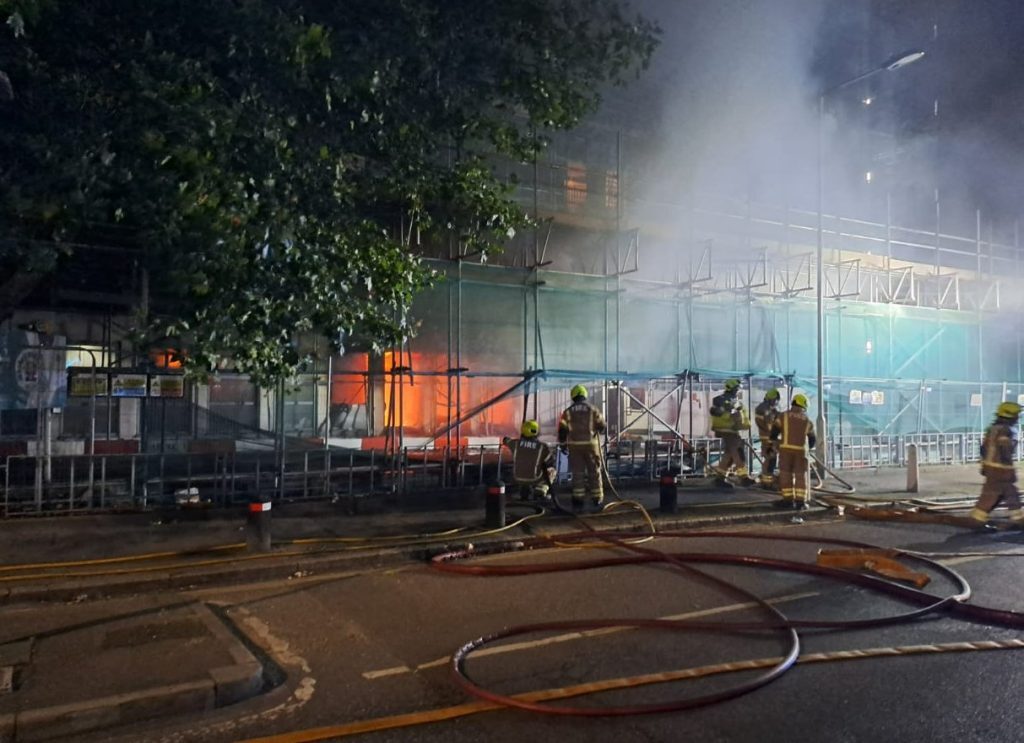A fire broke out in Dagenham recently, and investigations have revealed that materials left on scaffolding may have been the cause of the blaze. The fire, which occurred at a building site in Dagenham, quickly spread throughout the area, causing significant damage. The blaze required over 125 firefighters to bring it under control, highlighting the severity of the situation. The investigation into the cause of the fire has pointed towards materials left on the scaffolding, indicating that improper storage or handling may have led to the incident.
The fire serves as a stark reminder of the importance of proper safety measures and precautions at construction sites. It also raises questions about the potential risks associated with leaving materials unattended on scaffolding. The incident could have had far more serious consequences if not for the quick response of the fire brigade in containing the fire. The scale of the blaze underscores the need for vigilance and adherence to safety protocols in the construction industry.
The aftermath of the fire has left the building site in ruins, with extensive damage to the structure and surrounding area. The cost of repairs and reconstruction is expected to be substantial, adding further financial strain to the project. The impact of the fire is not just limited to the physical damage caused but also extends to the delays in construction and potential legal ramifications. The incident serves as a sobering reminder of the potential consequences of negligence and oversight in the construction industry.
The investigation into the cause of the fire is ongoing, with authorities working to determine the exact sequence of events that led to the blaze. The focus is on identifying the individuals or entities responsible for the oversight that may have contributed to the incident. The findings of the investigation are likely to have implications for the construction industry as a whole, prompting a review of safety practices and regulations. The aim is to prevent similar incidents from occurring in the future and to ensure the safety of workers and the public.
The incident has sparked debate and discussion within the construction industry, with stakeholders calling for greater awareness and compliance with safety standards. The need for proper training and education on safety protocols is evident, as is the importance of regular inspections and monitoring of construction sites. The incident in Dagenham has highlighted the risks associated with complacency and oversight in the industry, serving as a wake-up call for all stakeholders involved.
The impact of the fire extends beyond the physical damage caused, with implications for the reputation and credibility of the companies involved in the project. The incident has raised questions about the accountability and responsibility of construction companies in ensuring the safety of their workers and adhering to safety protocols. The need for transparency and accountability in the industry is evident, as is the importance of swift and effective response to emergencies such as fires.
The incident in Dagenham serves as a cautionary tale for the construction industry, highlighting the potential risks and consequences of overlooking safety measures. It underscores the need for a culture of safety and vigilance in the industry, with a focus on prevention and preparedness for emergencies. The incident should serve as a reminder to all stakeholders in the construction industry of the importance of prioritizing safety and compliance with regulations.
In conclusion, the fire in Dagenham serves as a harsh reminder of the potential dangers and risks associated with negligence in the construction industry. The incident should prompt a reevaluation of safety practices and protocols to prevent similar incidents from occurring in the future. It also underscores the need for greater awareness and accountability in the industry, with a focus on ensuring the safety of workers and the public. The lessons learned from the incident should serve to improve safety standards and practices in the construction industry, ultimately leading to a safer and more secure working environment for all involved.






